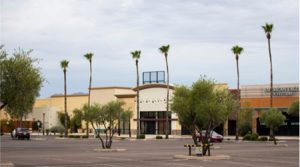 PIMA COUNTY (May 23, 2024)—The Pima County Board of Supervisors voted 3-1 on May 21 to reduce barriers for developers seeking to provide more residential construction along transportation corridors served by public transit. The supervisors’ action amends the Pima County Zoning Code (Title 18) to increase housing opportunities through a process known as Transit-Oriented Development (TOD).
PIMA COUNTY (May 23, 2024)—The Pima County Board of Supervisors voted 3-1 on May 21 to reduce barriers for developers seeking to provide more residential construction along transportation corridors served by public transit. The supervisors’ action amends the Pima County Zoning Code (Title 18) to increase housing opportunities through a process known as Transit-Oriented Development (TOD).
“Pima County Board of Supervisors has been focused on housing availability for the last two years, empaneling a task force then commission to address the issues,” said Carla Blackwell, director of Pima County’s Development Services Department. “Removing zoning code barriers is one strategic action to address this issue locally. This amendment to the zoning code lifts restrictions on sites and allows property owners to redevelop or utilize underdeveloped commercial property to speed up the process of creating new housing. With this code change we are hoping to see empty parking lots along major streets turn into housing.”
The amendment will incentivize construction of new multi-family housing in infill areas in established urban areas, such as commercial properties with excess parking. Incentives include offering reduced property setbacks and increasing the allowable height for buildings, allowing developers to construct more vertical housing units.
“This showcases Pima County’s multi-pronged approach to increase the availability of quality affordable housing,” said Dan Sullivan, the director of Pima County’s Community & Workforce Development Department. “Housing built through the TOD amendment will provide greater opportunities for residents to walk, bike, or use public transit to access businesses and services, and make more efficient use of existing development and infrastructure.”
To qualify, new housing developments must be on currently developed sites that include a county wastewater connection and water supply from Tucson Water or Metro Water District. Developments must also be located on county arterial streets with adequate traffic capacity near public transit routes and stops.
“Although commercial zoning allows up to 43 units per acre, site constraints and rezoning conditions previously made residential development alongside commercial development unfeasible,” said Blackwell. “This will offer an opportunity for redevelopment of aging retail centers along our major corridors.”


